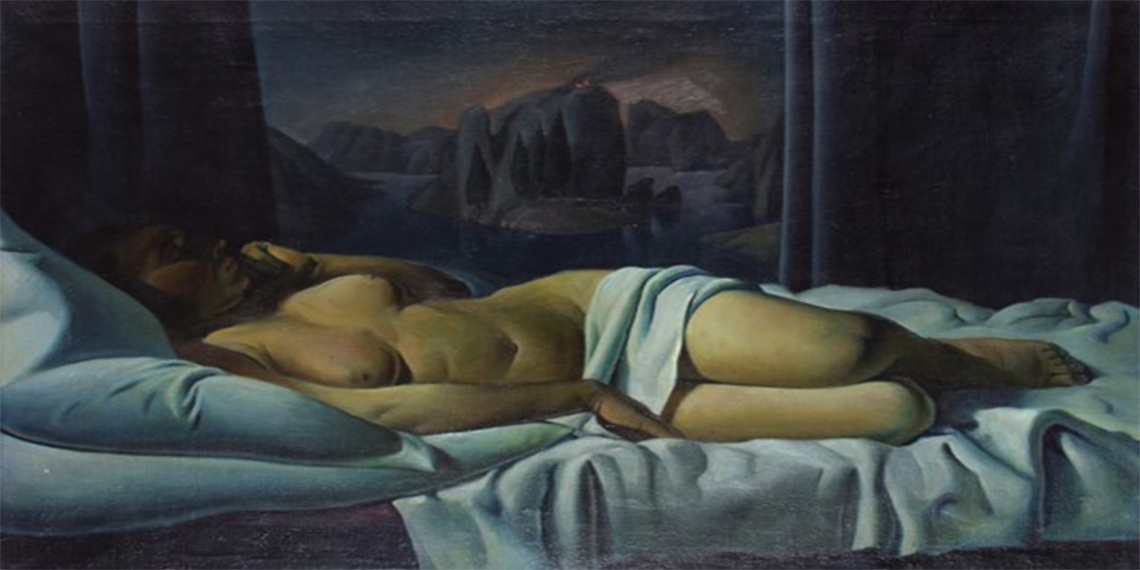
I did not look up to anyone, both back then and through all my life alike, although I studied old and new masters with interest, and followed what was happening in artistic and social life.
Đoko Mazalić
October 10 – November 14, 2017
December 7, 2017 – January 4, 2018
Đoko Mazalić (Bosanska Kostajnica, 1888 – Sarajevo, 1975) is one of the painters from the first generation of BH artists who studied painting. He graduated from the Hungarian Royal Academy of Fine Arts in Budapest (1910 – 1914). During his lifetime, he became accomplished as a professor, pedagogue, scholar, conservator, art historian and fine arts critic; his versatile work represents undisputed authority in the cultural life of Sarajevo almost throughout the third fourth decade of the 20th century.
“A rare restraint and distinction, a life lived at a distance from both people and events, an absolute control of himself and his powers, a prominent preference for research and science – a Cartesian spirit coupled with a proverbial Bosnian reticence and buttoned-up character, makes Đoko Mazalić an extraordinary phenomenon among BH artists in general. With his work stretching for more than six decades, his artistic development has inevitably gone through various influences – from Secession and Naturalism, through mysticism and Symbolism to some surreal atmospheres; as his contemporaries, he gave a contribution to nostalgia for classics, but he was the only one in his generation who found strength to establish a dialogue with his time – even in the period after the World War II when he embarked in a new painting adventure completely alone, occasionally touching Impressionism, Expressionism, and even Abstraction. The only counterpart we can find is his friend from youth, Jovan Bijelić, who, fortunately for him personally and our art, was able to develop in a far more stimulating, far more productive environment.” Azra Begić
Đoko Mazalić has a body of work that is rich and diverse both in style and in thematic sense. Different influences, from magic realism, Pointillism, pleinairism, classicism, and other forms can be found in it, even to the borders of abstraction that he never decided to cross, even though in some of his works one can feel hints close to later abstract expressionism. In terms of selection of topics, the range is just as wide. Only still nature is absent, while the rich repertoire of folk motifs, city scenes, civic portraits, animalism, religious themes, allegories, and finally Bosnian landscapes as the most important Mazalić’s motif can be found. Accidentally or by twist of fate, there are almost no landscapes of other regions left in his legacy. Changes within the color palette and the manner of painting relate to different periods, but at the same time can also be observed within individual motifs.
Thanks to continuous quality without major oscillations and the fact that he was one of the few BH painters who decided to forever return home after studies, Mazalić will shortly achieve the status of a respected and, soon after, a key actor of the Sarajevo art scene. By his own choice, he is primarily a painter, but it is impossible to see him solely through that segment given that he perceived painting and art in a much wider context. He is active at all exhibitions, which are not so frequent in Sarajevo at that time, and often he is their initiator.
The purpose of this exhibition is precisely to remind us of Mazalić’s greatness and place, but also of our debt to him.is one of the painters from the first generation of BH artists who studied painting. He graduated from the Hungarian Royal Academy of Fine Arts in Budapest (1910 – 1914). During his lifetime, he became accomplished as a professor, pedagogue, scholar, conservator, art historian and fine arts critic; his versatile work represents undisputed authority in the cultural life of Sarajevo almost throughout the third fourth decade of the 20th century.
The purpose of this exhibition is precisely to remind us of Mazalić’s greatness and place, but also of our debt to him.
